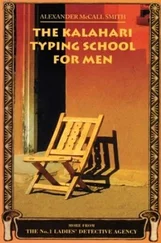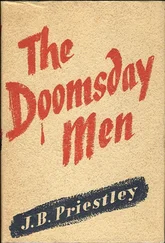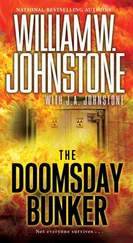When Röntgen switched the current back on again, his eyes were fixed on the adjacent bench. Again a green light shone out, as if something in the gloomy room had been ‘smitten with a ray of bright sunshine’. 14He struck a match and went over to investigate. On the bench he found a small cardboard screen coated with barium platinocyanide, a chemical whose atoms emit light, or fluoresce, when struck by rays. Röntgen found that whenever the Crookes tube was charged with electricity, the screen glowed with its distinctive green light.
The 50-year-old physicist knew that he had made the discovery of his life. A mysterious ray was being generated in the Crookes tube and passing right through its lightproof covering. This was something quite new and unexpected. The rather staid professor became so absorbed in his astonishing discovery that he completely lost track of time. The clock ticking on the wall above his bench was forgotten. When he failed to return home for dinner, his puzzled wife dispatched a servant to find him. But as soon as he’d eaten, the distracted Röntgen grabbed his hat and coat and hurried back to the laboratory. There he continued exploring the mysterious rays late into the night. Indeed, so mysterious were these rays that Röntgen christened them ‘X’ for unknown – X-rays.
Over the course of the following days and nights he saw what no person had ever seen before. When he held his hand between the tube and the fluorescent screen, he could see a shadow of his hand cast by the invisible X-rays. But inside the shadow, Röntgen suddenly realized he could also see the bones of his own hand. It must have been a heart-stopping moment. He could see through his own flesh and blood! But what kind of rays could pass through human flesh? Soon Röntgen, a keen photographer, found that he could capture images with these unearthly rays, which travelled effortlessly through a thick book, a plank of wood and even a thin sheet of metal.
Wilhelm Röntgen was working such long hours that his wife began to fear for his health. So he finally plucked up the courage to tell her what he had discovered. When her husband said that he had found a way to see through solid objects, she must have thought he had taken leave of his senses. To prove that he was not mad, he placed her hand on a photographic plate and powered up the Crookes tube. When the plate was developed, his wife saw an image of the bones in her hand surrounded by a ghostly veil of insubstantial flesh. On one skeletal finger was the dark band of her wedding ring. It was an astonishing image, verging on the miraculous.
Another person at this time who saw his own hand X-rayed, described the experience: ‘Every bone is perfect, even the cartilaginous spaces between being discernible. It is impossible to describe the feeling of awe that one experiences on actually seeing the image of his own skeleton within the enshrouding flesh.’ 15For Röntgen’s wife, as for many people, the sight of her own bones was a chilling reminder of her own mortality.
Röntgen finally announced his discovery in a scientific journal at the end of December 1895. The news travelled fast and within days, the world’s press was hailing his new rays as a ‘marvellous triumph of science’. 16Some readers simply didn’t believe the newspaper reports, refusing ‘to be hoodwinked by sensation-mongering journalists’, as one writer put it. 17But it was hard to ignore the evidence of your eyes. Soon X-ray photographs, like ghostly glimpses of a hidden world, were appearing in all the newspapers and journals of the day.
At a public lecture where Professor Röntgen demonstrated X-ray photography, the final images, or ‘shadowgrams’, were greeted with the kind of cheering and loud applause that was usually reserved for great theatrical performances. This was science for the common man. But emperors too were impressed. Kaiser Wilhelm II personally awarded Röntgen an important Prussian decoration after attending one of his lecture. The world was awestruck by the Röntgen rays, as they were soon being called, although never by their extremely modest discoverer.
According to one journal, ‘civilized man found himself the astonished owner of a new and mysterious power’. The writer continued:
Never has a scientific discovery so completely and irresistibly taken the world by storm. Its results were of a kind sure to acquire prompt notoriety. The performances of ‘Röntgen’s rays’ are obvious to the man in the street; they are repeated in every lecture-room; they are caricatured in comic prints; hits are manufactured out of them at the theatres; nay, they are personally interesting to every one afflicted with a gouty finger or a misshapen joint, and were turned to account, at the last Nottingham Assizes, to secure damages for an injury to a lady’s ankle. 18
In laboratories and law courts alike, Röntgen’s discovery was the subject on everyone’s lips. Visitors to the Crystal Palace Exhibition in London queued impatiently to see ‘the Wondrous X Rays, the Greatest Scientific Discovery of the Age’. Posters promised that visitors would be able to ‘Count the coins within your purse’, although at a charge of threepence – a considerable sum for working people – those purses would be rather less full when they left than when they arrived. 19
In 1896, newspapers were full of haunting, ethereal ‘shadow pictures’. Among the many images were skeletal hands, a ‘living but chloroformed mouse’ whose diaphanous shoulder blades looked like ‘the wings of a bee’, a two-day-old puppy, a chicken with a broken leg laid out like a bony marionette, even an ancient Egyptian mummified bird stripped of its wrappings for the first time in thousands of years by the mysterious rays. 20To the popular mind, Professor Röntgen was a scientific wizard, drawing back the veil of appearances so that people could gaze for the first time upon nature’s hidden secrets.
The popular American magazine McClure’s sent a reporter to interview the wizard of Würzburg in his laboratory. The room where the miraculous had been revealed was ‘bare and unassuming to a degree’. Professor Röntgen entered his laboratory ‘like an amiable gust of wind’. His ‘whole appearance bespeaks enthusiasm and energy’, claimed the man from McClure’s , adding that ‘his long, dark hair stood straight up from his forehead, as if he were permanently electrified by his own enthusiasm’. From Röntgen to Einstein, unruly hair has always been seized upon by journalists as a sign of eccentric genius if not incipient madness. Clearly, the figure of the scientist-inventor was as instantly recognizable in 1896 as he is today in characters such as Dr Emmett Brown from the Back to the Future films.
The reporter described the Professor as a Sherlock Holmes of science, ‘a man who, once upon the track of a mystery which appealed to him, would pursue it with unremitting vigour’. Nevertheless, this scientific sleuth remained baffled by X-rays, as Röntgen frankly admitted to the awe-struck interviewer.
‘Is it light?’ asked the reporter.
‘No,’ replied the Professor.
‘Is it electricity?’
‘Not in any known form.’
‘What is it?’ asked the man, his voice hushed.
‘I don’t know.’ 21
America was engulfed by a wave of ‘Röntgen mania’. The Professor himself was so appalled by the unscientific media frenzy that his first interview was also his last, and he withdrew forthwith from the limelight. But the damage had been done. Within two months of Röntgen’s discovery hitting the headlines, Philadelphia and Chicago had sold out of Crookes tubes. A worried assemblyman in Somerset County, New Jersey, brought forward a bill in the State Legislature banning the use of X-ray opera glasses in the theatre. A similar concern for public decency led an English firm to market X-ray-proof underwear for ladies.
Читать дальше












